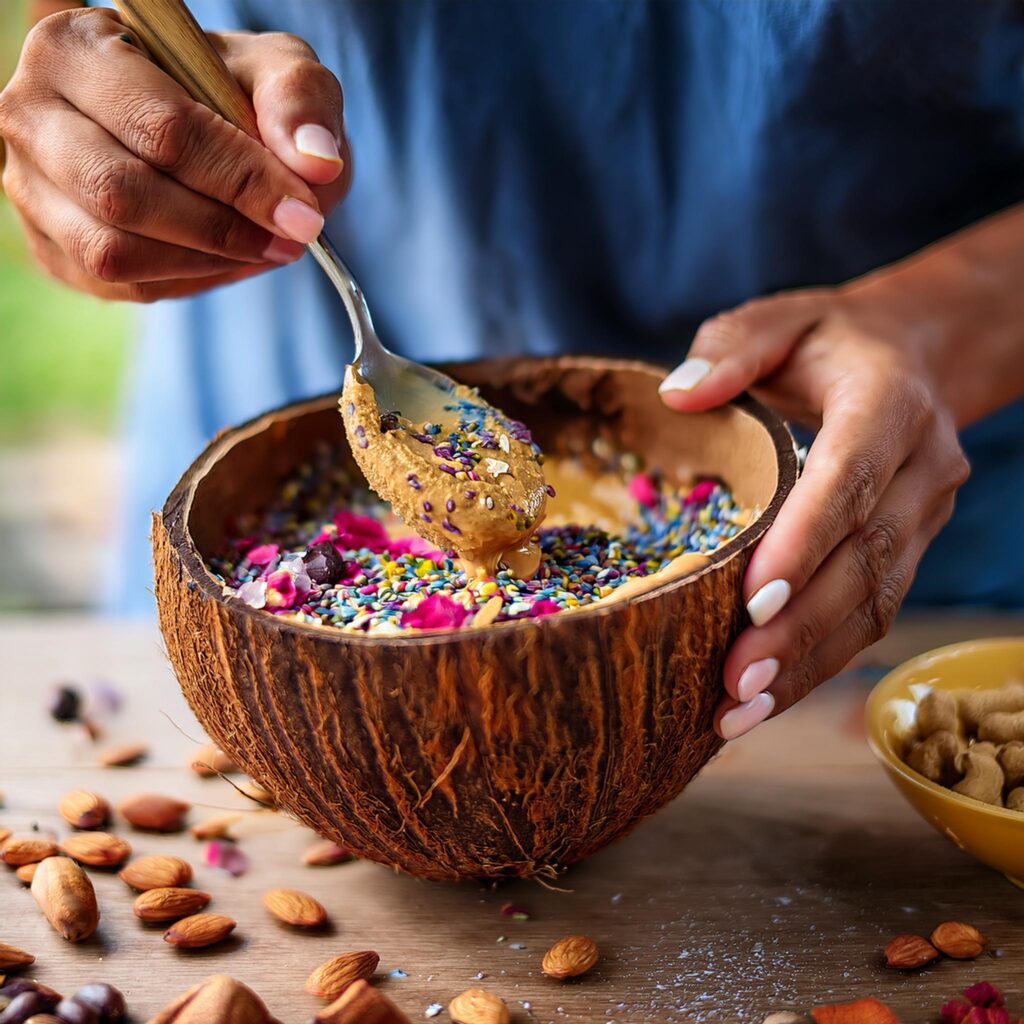Introduction
Birds add life, color, and sound to any garden, and making a bird feeder from a coconut is the perfect way to attract these winged visitors. This eco-friendly project transforms a simple coconut shell into a nourishing and beautiful feeding station for local wildlife. Not only does it reuse natural materials, but it also adds a rustic charm to your outdoor space.
This guide will walk you through the steps to make your own bird feeder from a coconut, a simple and fun activity suitable for all ages. Whether you’re a birdwatcher, a gardener, or someone who enjoys DIY projects, this creative feeder will bring joy to your backyard and its feathered inhabitants.
Table of Contents
- Why Choose a Coconut Bird Feeder?
- Materials You’ll Need
- Preparing the Coconut Shell
- Filling Your Feeder with Bird Food
- Adding a Hanging Mechanism
- Best Places to Hang Your Bird Feeder
- Tips to Attract Birds to Your Feeder
- Maintaining Your Coconut Bird Feeder
- Benefits of DIY Coconut Bird Feeders
- FAQs
- Conclusion
1. Why Choose a Coconut Bird Feeder?

Coconut bird feeders are:
- Eco-Friendly: Made from natural materials, reducing plastic waste.
- Durable: Coconut shells withstand harsh outdoor conditions.
- Easy to Make: Requires minimal tools and effort.
- Bird-Friendly: A safe and natural feeding station for various bird species.
2. Materials You’ll Need
To get started, gather these items:
- A half coconut shell (cleaned and dried).
- Bird seed mix (sunflower seeds, millet, peanuts, or oats).
- Suet or peanut butter (as a binding agent).
- A strong twine, rope, or wire for hanging.
- A small drill or awl (to create holes for hanging).
- A spoon and bowl for mixing.
- (Optional) Scissors or a saw (if cutting the coconut yourself).
3. Preparing the Coconut Shell
- Halve the Coconut: If you’re starting with a whole coconut, carefully cut it in half with a saw or sturdy knife.
- Remove the Flesh: Scoop out the coconut meat using a spoon or knife until the shell is clean.
- Drill Holes: Use a drill or awl to create two to four evenly spaced holes around the edge of the shell for threading rope.
- Clean and Dry: Rinse the shell thoroughly and allow it to dry completely.

4. Filling Your Feeder with Bird Food
- Mix the Feed: In a bowl, combine birdseed with suet or peanut butter to create a sticky mixture that holds together.
- Fill the Shell: Spoon the mixture into the hollow of the coconut, packing it firmly to prevent spillage.
- Leave Space: Avoid overfilling the shell to make it easier for birds to perch and feed.

5. Adding a Hanging Mechanism
- Thread the Rope: Pass the rope or twine through the drilled holes and tie secure knots to create a hanging loop.
- Ensure Stability: Test the rope to make sure it can support the weight of the filled coconut.
- Add Extra Security: Use double knots or reinforce with glue if necessary.
6. Best Places to Hang Your Bird Feeder
- Hang the feeder in a safe location away from predators like cats.
- Choose spots with partial shade to prevent feed spoilage.
- Place it near trees or bushes to provide shelter for the birds.
- Ensure the feeder is at a visible height for easy observation.
7. Tips to Attract Birds to Your Feeder
- Offer Variety: Use a mix of seeds, suet, and fruits to attract different bird species.
- Keep It Fresh: Regularly refill and clean the feeder to keep the food appealing.
- Add Water: Place a birdbath nearby to complement the feeder.
- Minimize Noise: Quiet and secluded areas are more inviting to birds.
8. Maintaining Your Coconut Bird Feeder
- Clean Regularly: Wash the coconut shell every two weeks to prevent mold.
- Inspect for Damage: Check the rope and shell for wear and tear.
- Seasonal Adjustments: Use suet in cold weather and switch to lighter food options in summer.
9. Benefits of DIY Coconut Bird Feeders
- Encourages Biodiversity: Attracts a variety of bird species to your garden.
- Teaches Sustainability: Reuses natural materials, reducing waste.
- Cost-Effective: Made with minimal expense using readily available items.
- Family-Friendly Activity: Engages kids in a fun and educational DIY project.
10. FAQs
Q1: What kind of birds will this feeder attract?
Common visitors include sparrows, finches, robins, and tits, depending on your location.
Q2: Can I use store-bought coconut shells?
Yes, pre-halved coconut shells work perfectly for this project.
Q3: What’s the best binding agent for bird food?
Suet or peanut butter are excellent choices. Avoid sugary or processed alternatives.
Q4: How long does the feeder last?
With proper care, a coconut feeder can last several months.
Q5: Can I decorate the feeder?
Yes, but use bird-safe, non-toxic paints or markers sparingly.
11. Conclusion
Making a bird feeder with half a coconut is a delightful way to support local wildlife while adding a rustic charm to your garden. It’s easy, affordable, and sustainable—a perfect project for bird lovers of all ages. With proper care and thoughtful placement, your coconut bird feeder will become a favorite spot for feathered visitors.
So, grab a coconut, some seeds, and start crafting your eco-friendly feeder today!